
Ancient monuments. Preserved town centers. Superlative art and architecture. While UNESCO has its World Heritage criteria, what makes a place “charming” is a bit more subjective. Perhaps it comes down to winding cobbled lanes and fairy-tale castles or colorful old houses surrounded by outdoor cafes. Maybe it’s just a certain je ne sais quoi. While charm, like beauty, rests in the eye of the beholder, these 10 cities from around the world impress with rich culture and history and are sure to captivate your imagination.
Image Gallery
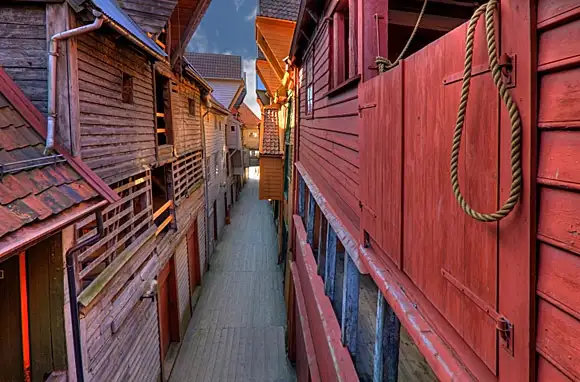
Bergen, Norway
In Norway's "Gateway to the Fjords," painted wooden houses with gabled fronts lean along the harbor, where market sellers entice shoppers with wild smoked salmon, caramelized brown cheese, and jars of orange-red cloudberry jam. Bergen is colorful, even on rainy days. It's also historical. Not only is it designated a World Heritage city, but its old wharf, Bryggen, is listed as a UNESCO site. Originally established for the dried codfish trade by German Hanseatic merchants in the 14th century, this medieval settlement of long, slender dockside homes has been plagued by fires over the years but has been rebuilt each time using traditional methods. Today, some 62 buildings, including the Hanseatic Museum, remain. Explore Bryggen via narrow passageways leading to old warehouses, where the floorboards creak and the walls smell of aged salted wood.
Don't Miss: Dining at Enhjorningen (The Unicorn), set in one of the restored wharf buildings and known for its seafood menu, and Tracteursted, the oldest restaurant in town, serving classic Bergen food in an old assembly room with slanted floors.

Bergen, Norway
In Norway's "Gateway to the Fjords," painted wooden houses with gabled fronts lean along the harbor, where market sellers entice shoppers with wild smoked salmon, caramelized brown cheese, and jars of orange-red cloudberry jam. Bergen is colorful, even on rainy days. It's also historical. Not only is it designated a World Heritage city, but its old wharf, Bryggen, is listed as a UNESCO site. Originally established for the dried codfish trade by German Hanseatic merchants in the 14th century, this medieval settlement of long, slender dockside homes has been plagued by fires over the years but has been rebuilt each time using traditional methods. Today, some 62 buildings, including the Hanseatic Museum, remain. Explore Bryggen via narrow passageways leading to old warehouses, where the floorboards creak and the walls smell of aged salted wood.
Don't Miss: Dining at Enhjorningen (The Unicorn), set in one of the restored wharf buildings and known for its seafood menu, and Tracteursted, the oldest restaurant in town, serving classic Bergen food in an old assembly room with slanted floors.

Arles, France
In the Provencal city of Arles, follow in the footsteps of Vincent van Gogh by retracing his brushstrokes at Le Cafe la Nuit (The Night Cafe) or envisioning Starry Night on a walk along the Rhone River quay. Here, in this painters' paradise, where people relax on terraces outside blue shuttered buildings and old stone streets wrap around ancient monuments, art and history are forever linked. In terms of UNESCO, the city is heritage rich. For example, Arles' Roman and Romanesque monuments will take you back to the 1st century BCE. Attend an outdoor festival performance on a balmy evening at the ancient theater or hum along to Carmen at a bullfight held in the Roman arena, once home to sparring gladiators. The pilgrimage route Santiago de Compostela, which runs through Arles, is also classified by UNESCO.
Don't Miss: The cryptoporticus, a subterranean gallery with vaulted ceilings that was built to support the base of the Roman forum, now a perfect place to escape the sun on hot summer days.
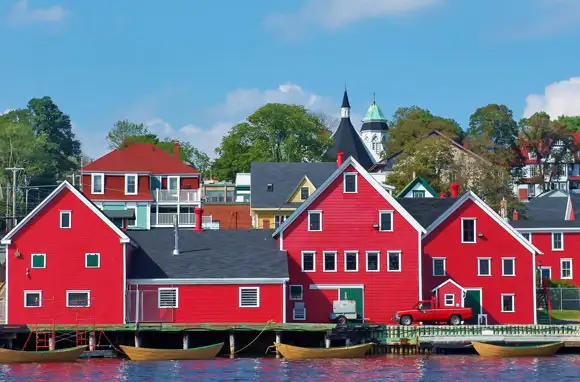
Lunenburg, Nova Scotia
Lunenburg's bright-red buildings form a timeless backdrop for the tall ships, such as the Bluenose II, that dance in and out of its historical harbor. Established in 1753, this British colonial settlement was the second "model" town (after nearby Halifax) and its economy was structured around fishing and shipbuilding. Nowadays, with its original look and feel still intact, Old Town Lunenburg remains an industrious seafaring center and has secured a spot on UNESCO's World Heritage list. As a tourist destination, it's irresistible. After a lesson on whaling and rum running at the Fisheries Museum of the Atlantic (and a photo op with the iconic Adams & Knickle fishery building), browse through ship models and watercolors at local galleries, check in at a family-run B&B, and of course, dine on sea scallops and Nova Scotia lobster at one of the classic restaurants in town.
Don't Miss: Seafood and live Maritime-style music at The Old Fish Factory Restaurant & Ice House Bar, set in a former fish-processing plant on Lunenburg's waterfront.

Bruges, Belgium
With rippling canals and old whitewashed almshouses, Bruges is picture-postcard-perfect. From an 18th-century bridge, watch swans paddle around the peaceful Minnewater, or "Lake of Love," which once served as a mooring place for barges. Or, meander along the often photographed Rozenhoedkaai and gaze at the medieval belfry that glows at night. This northern city in Flanders may resemble a living fairy tale, but its historic center, showcased by Lego-like brick Gothic architecture, qualifies it as World Heritage. It's also the birthplace of the school of the Flemish Primitives, which, thanks to the patronage of rich 15th-century merchants, fostered the artistic talents of painters such as Jan van Eyck and Hans Memling. In summer, Bruges attracts tourists in droves, so come during the winter months when you can curl up under a woolen blanket on an open carriage ride and pretty much have the cobblestone streets all to yourself.
Don't Miss: Climbing the 366 steps to the top of Belfort, Bruges' belfry that towers over Market Square, and taking in a panoramic view of the city while listening to a free concert from its carillon's silver-toned bells.
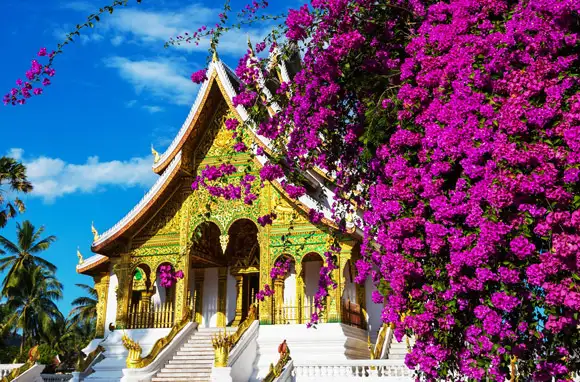
Luang Prabang, Laos
In laid-back Luang Prabang, flower-framed temples grace hillsides as the tranquil Nam Khan river flows through town until it meets the Mekong. As a local legend says, the Buddha would have smiled when he rested here during his travels. Wake up early to see the silent procession of saffron-robed monks receiving alms and rice, and then spend the days wandering among the traditional wooden houses, with their mix of Lao and European influences, that are worthy of World Heritage status. The triangular Wat Xieng Thong stuns as one of the most beautiful temples in the area, and the Royal Palace Museum, a French colonial building that houses the 14th-century gold Prabang Buddha for which the town is named, is also a must-see. When daylight fades, shop for colorful silk scarves, handwoven textiles, and posa (a paper made from mulberry bark) at the low-lit night market.
Don't Miss: Watching the sunset along the Mekong River, where you can dine in one of many cafes and restaurants, or from the top of Mt. Phou Si, a hill in the heart of Luang Prabang with 328 zigzagging steps.
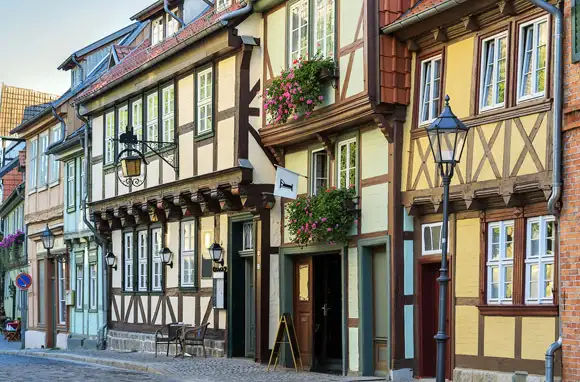
Quedlinburg, Germany
North of Germany's Harz Mountains, a castle rests high up on a hilltop and half-timbered houses trimmed with flower-stuffed window boxes hug narrow lanes. Quedlinburg has been refining the definition of classic European charm for more than 1,000 years. And its preserved Old Town, a prosperous trading center since the Middle Ages, has caught the eye of UNESCO. With around 1,200 timber-framed houses constructed over six centuries, it's easy to see how the town's building style has evolved from the late Gothic epoch to the Baroque era and beyond. Get a quick architectural study at the Fachwerkmuseum, set in one of the country's oldest houses of its kind, or gain appreciation for a recent restoration while listening to a concert at the 13th-century Blasiikirche church. And a visit to Quedlinburg wouldn't be complete without ascending its dominating sandstone cliff to see the Collegiate Church of St. Servatius, considered a masterpiece of Romanesque design.
Don't Miss: Tea and cheesecake, made according to "Grandma's recipe," at Cafe am Finkenherd, located in three adjacent historical half-timbered homes near the collegiate church.

Oaxaca, Mexico
With indigenous handicraft markets, a renowned culinary scene, and world-class museums, Oaxaca is a haven for artisans and artists. It's also known for its architectural treasures. Founded in 1529 but inhabited since prehistoric times, this World Heritage city built on a grid pattern (with square blocks centered on a zocalo, or main square), earns UNESCO points for being a star example of Spanish colonial town planning. After touring important sites like the ornately decorated Santo Domingo church and the Cathedral of Oaxaca, break for a siesta at a sidewalk cafe under the arcades at Plaza de la Constitucion, where you can sip a cup of tejate (a cold drink made with ground cocoa) or down a glass of mezcal. Just outside of the city, Monte Alban—a mountaintop archaeological site of pyramids, plazas, and other ruins—was once the capital of the ancient Zapotec civilization and is now listed as a UNESCO site.
Don't Miss: The Juarez and 20 de Noviembre markets, which overflow with pottery, rugs, and other handicrafts, as well as typical foods including pizza-like tlayudas (large tortillas topped with Oaxacan cheese, meat, and refried beans) and chicken sauced with the city's famous black mole.

Quebec City, Quebec
You'll find plenty of Old World charm in Quebec, whether dining alfresco on warm summer days or strolling twinkle-lighted streets on sub-zero evenings. Although its towering chateau and local language evoke France, this colonial World Heritage city is undeniably Canadian. Join Carnaval de Quebec revelers in sipping caribou (a spirited brandy drink made to counter the winter chill), or dive into some poutine, a dish of fries smothered in brown gravy and squeaky cheese curds. No matter what, Quebecois culture is deeply rooted in history. Founded along the St. Lawrence River by the 17th-century French explorer Samuel de Champlain, Old Quebec, with its preserved ramparts and citadel, is perhaps the New World's best example of a fortified city. Its historic Lower Town centers around Place Royale, which houses the Les Musees de la Civilisation and Notre Dame des Victoires, one of the oldest stone churches in North America.
Don't Miss: Riding down the funicular to Lower Town in search of boutiques and cafes, such as patisserie Le Petite Cochon Dingue, where you can snack on a croque monsieur while watching bakers fill tarts and frost cakes.
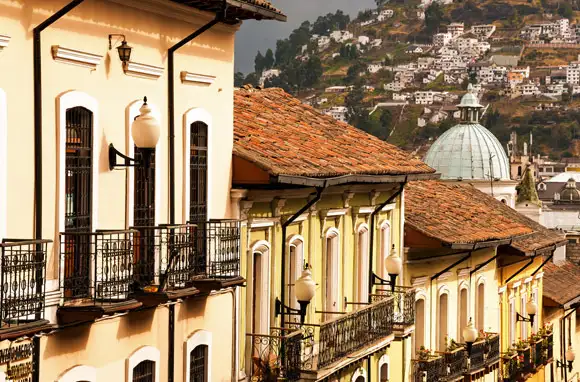
Quito, Ecuador
Flanked by the active Pichincha Volcano and founded in the 16th century on the ruins of an Inca city, Quito is the main juncture in Ecuador where nature and culture meet. Set on a plateau in an Andean valley, it's one of the highest capital cities in the world, and despite rumblings from frequent earthquakes, the city is considered by UNESCO to have the "best preserved and least altered" historic center in Latin America. In fact, it was one of the first two cities (along with Krakow) to be declared a World Heritage site in 1978. More recently, its center—known for its cobbled Spanish colonial streets—is being revitalized through the restoration of plazas and landmarks, and a new clean-up strategy aims to make the area safer for tourists. Explore Quito's maze of stuccoed homes or admire Baroque-style monasteries and the elaborately carved La Iglesia de la Compania, with its golden altar that renders it one of the richest churches in South America.
Don't Miss: Heritage Nights, weekly cultural parties on Saturday evenings, when locals and visitors take over the historic center to watch theater and dance performances, reveling street artists, and open-air concerts.
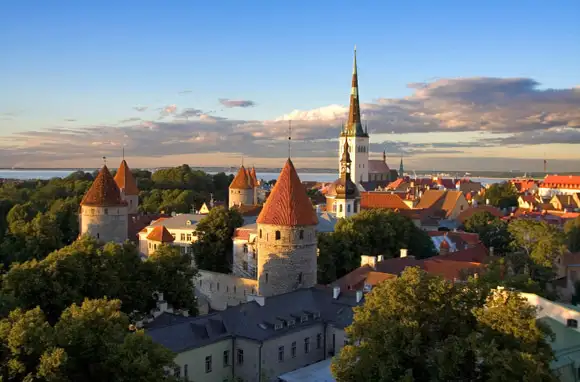
Tallinn, Estonia
With opulent church spires, a castle, and winding streets still using names from the Middle Ages, Tallinn is more than the capital of Estonia. In 2011, it was designated a European Capital of Culture, and according to UNESCO, it's "an exceptionally complete and well-preserved" medieval trading city on the Baltic coast. Part of the Hanseatic League, the city was a bustling urban and commercial center in the 13th through 16th centuries. Walk through Old Town and see old hooks and pulleys used to move salt, tea, and flour up to former warehouses. In Town Hall Square, grab a table at one of the cafes surrounded by multicolored merchant houses, or witness glassblowing and pottery making using traditional techniques at the open-craft studios in St. Catherine's Passage. Just be sure to stop at Raeapteek, the oldest continuously working pharmacy in Europe, for a wooden jug of claret made with the original 1467 recipe and panis martius, a type of marzipan said to cure lovesickness.
Don't Miss: Christmastime in Tallinn, when the Old Town enchants with an old-fashioned Christmas market, an outdoor ice-skating rink, and a large lit tree, a tradition that dates back to 1441 when Europe's first-ever public Christmas tree was displayed here.
More From Smartertravel:
We hand-pick everything we recommend and select items through testing and reviews. Some products are sent to us free of charge with no incentive to offer a favorable review. We offer our unbiased opinions and do not accept compensation to review products. All items are in stock and prices are accurate at the time of publication. If you buy something through our links, we may earn a commission.
Related
Top Fares From
Today's Top Travel Deals
Brought to you by ShermansTravel
Greece: 9-Night Vacation, Incl. Meteora &...
Exoticca
 vacation
$2099+
vacation
$2099+
New Year Sale: Luxe, 9-Nt Alaska...
Oceania Cruises
 cruise
$3599+
cruise
$3599+
Ohio: Daily Car Rentals from Cincinnati
85OFF.com
 Car Rental
$19+
Car Rental
$19+



